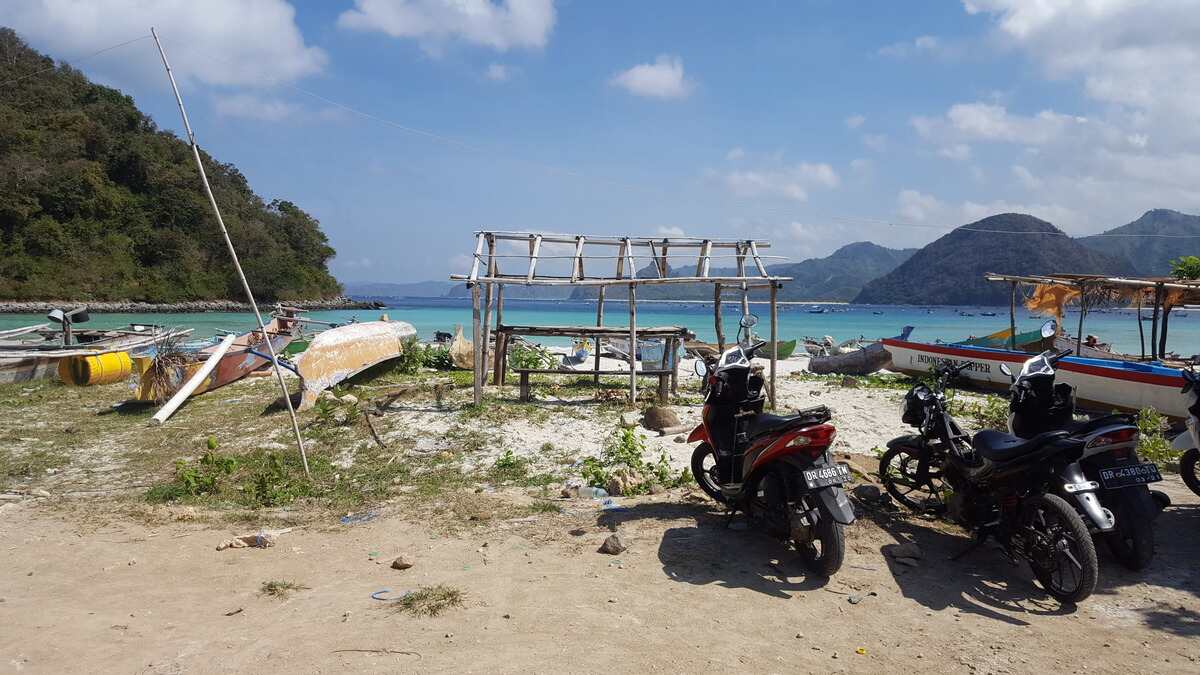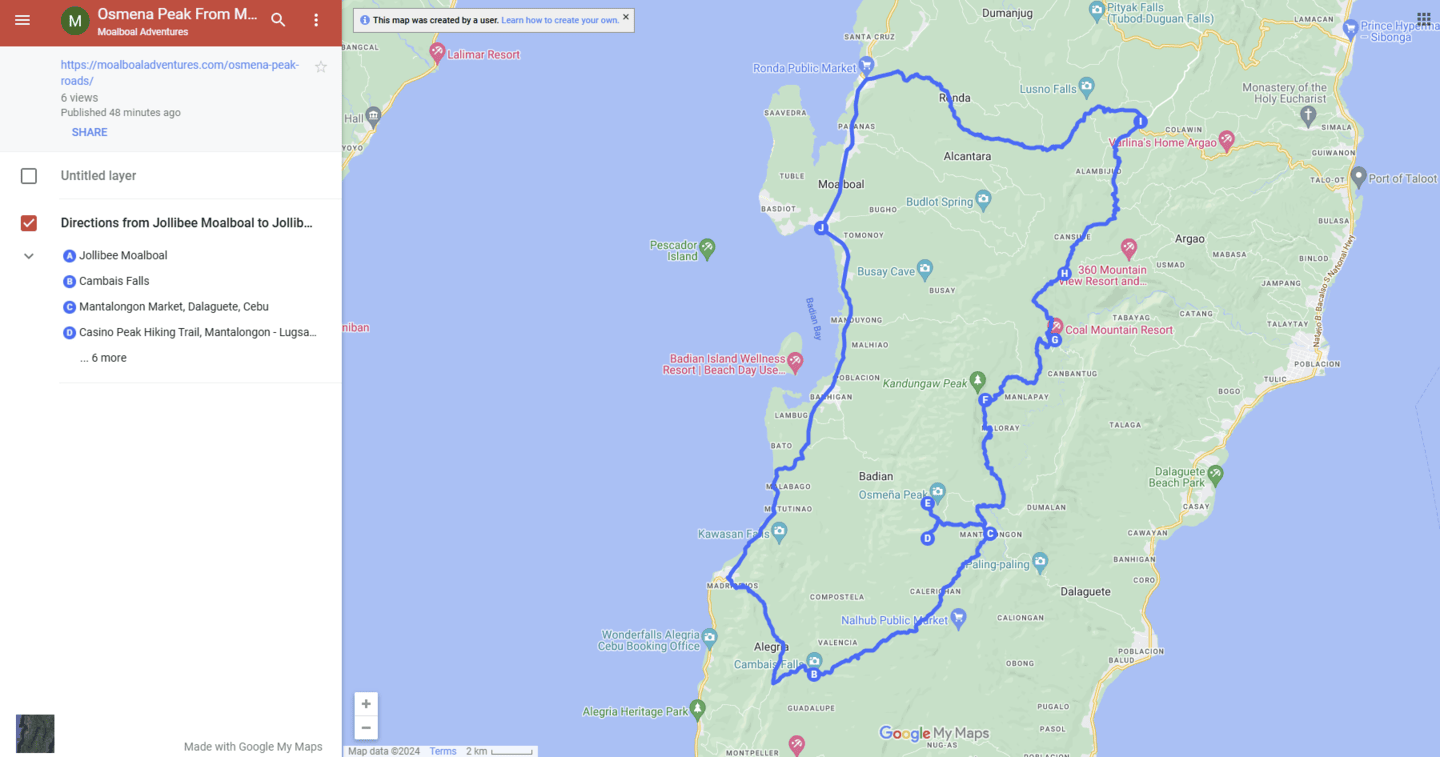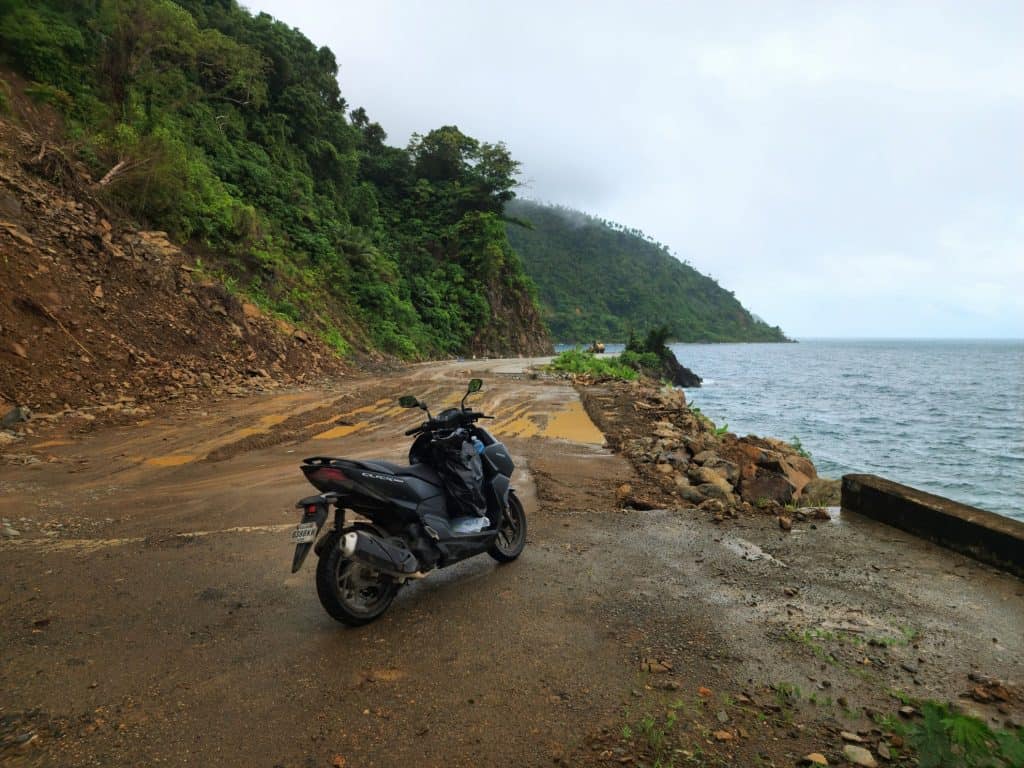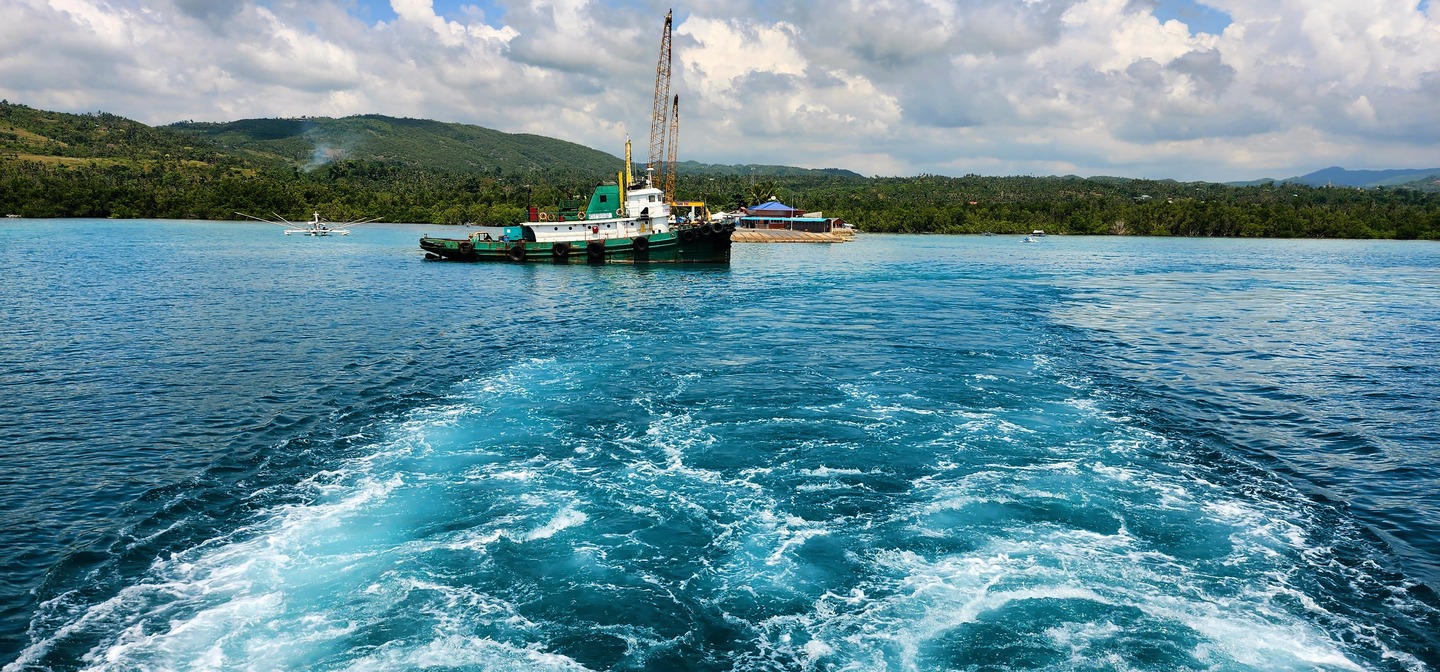Renting a scooter in Southeast Asia isn’t just about getting from point A to point B. It’s about the freedom to explore at your own pace, to discover hidden gems off the beaten path, and to truly immerse yourself in the local culture. It’s about feeling the wind in your hair, the sun on your face, and the thrill of carving your own path through this incredible region.
Let me tell you a story that might make some of you wince a little. Back in 2014, I landed in Ho Chi Minh City, Vietnam, wide-eyed and fueled by wanderlust. My dream was to explore the entire country by scooter, then keep rolling through Laos and Cambodia. Fueled by that dream, I found an online ad for a scooter for sale – a Yamaha Nouvo for a cool $200.
I’d never ridden a scooter before, let alone owned one. And let me be clear, I absolutely don’t recommend replicating this exact approach! Fast forward a few years, back in the States, I finally took a motorcycle course and got my license – safety first, folks!
So, back to that nervous (and frankly, slightly reckless) day in Ho Chi Minh City. Excitement battled with pure terror as I rode off the dealer’s lot. With no real plan, I spotted a local guy cruising down the street and, well, just started following him. Like a student mimicking their teacher, I observed his riding style, hoping to pick up some pointers. After a while, I guess my intense following got a little weird – the guy kept looking back in confusion! Undeterred, I found another local rider to shadow for a bit.
A few chaotic hours later, I miraculously found my way to my hostel. The next day, my real adventure began. Over the next 3 months, I clocked a whopping over 6,000 km on that scooter, traversing the entire length of Vietnam, all the way to the Chinese border. Laos and Cambodia were next, making this a truly epic solo journey. For two glorious weeks, a travel buddy joined me, making the memories even more special.
This scooter escapade wasn’t just about the miles covered. It was about the never-ending string of adventures – from getting lost (and miraculously found) in the backroads of Laos to sharing meals and stories with welcoming locals. There were flat tires fixed under the starry sky, breathtaking landscapes that took my breath away, and moments of pure frustration that tested my limits. It was a constant learning experience, forcing me to adapt, improvise, and embrace the unexpected.
Looking back, this trip was more than just an adventure – it was life-changing. I met incredible people, learned valuable lessons about myself, and discovered a newfound appreciation for Southeast Asia’s rich culture and stunning beauty.
So, while I wouldn’t recommend mimicking my exact rookie mistakes, I do encourage you to consider a scooter adventure in Southeast Asia. Just do it responsibly –get your motorcycle driving license and IDP, take a safety course if you’re new to two wheels, and prepare for an unforgettable journey that might just change your life too.
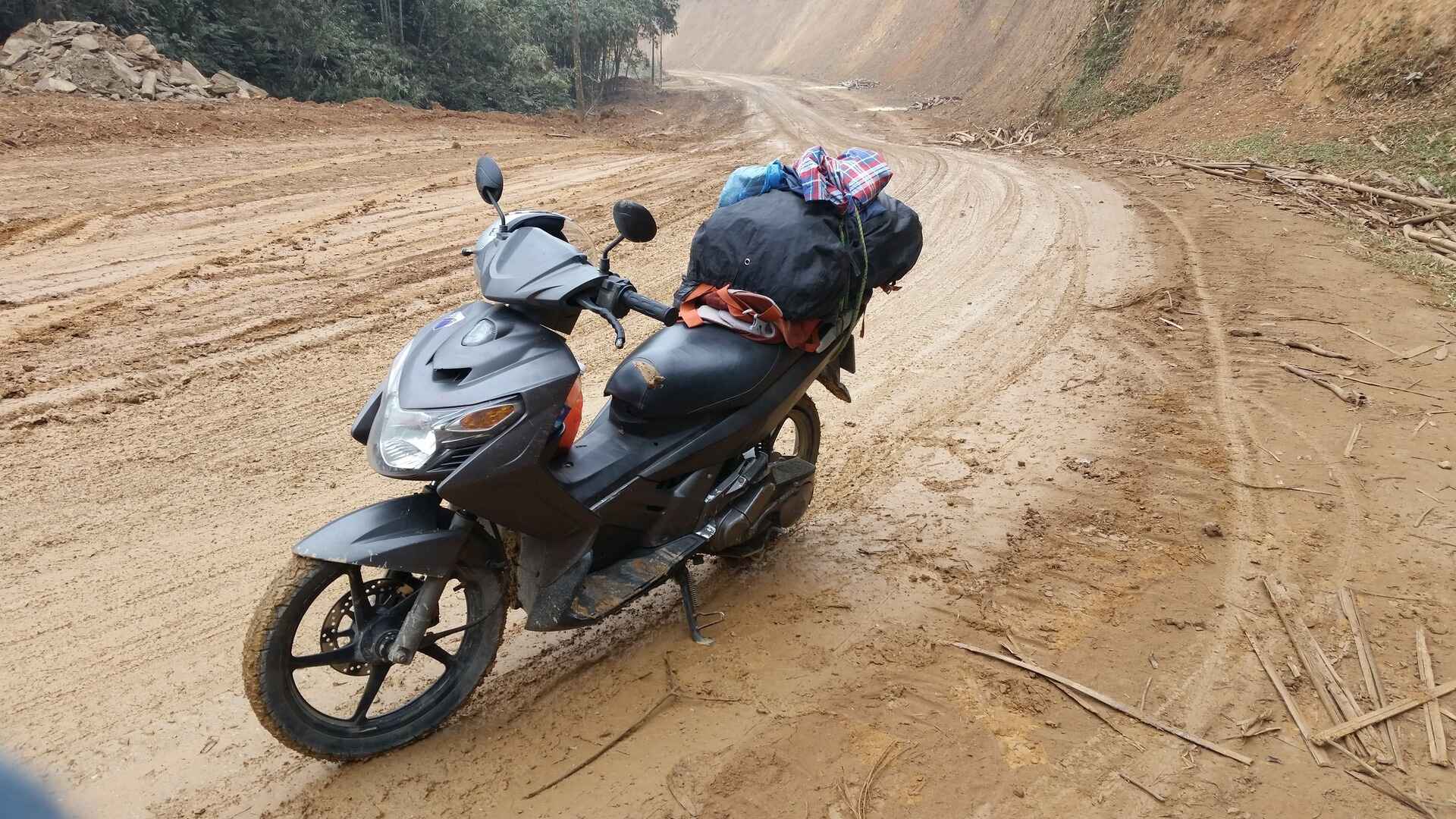
Back in 2014, Northern Vietnam’s roads threw me a curveball. A flat tire in the middle of nowhere meant a 10km push to the nearest repair shop.
Motorcycle License and Legality
The most commonly asked question:
Looking into scooter rentals for my Southeast Asia trip. I have a car license from my home country, but not a motorcycle license. Can I legally drive and rent a scooter in Southeast Asia with just a regular driver’s license?
NO!, a car license from your home country won’t be sufficient for motorcycle or scooter drive/rentals in Southeast Asia.
I acknowledge that many foreigners and even locals might drive a scooter without a motorcycle license, and some shops might be willing to rent despite the lack of this endorsement. However, I strongly advise against it due to the significant risks involved.
- Legality: Driving a motorcycle without the proper license is illegal in the Philippines and SEA. Getting caught by authorities could lead to fines, scooter confiscation, and even arrest.
- Insurance: Most travel insurance policies won’t cover you in case of an accident if you don’t have the proper license. This could leave you financially responsible for any damages or injuries.
- Accident Repercussions: In severe cases, especially if the accident involves serious injuries or property damage, you could face arrest and detention until the situation is resolved.
- Safety Concerns: Without proper training and experience, the risk of accidents increases significantly.
By understanding these repercussions, you can make an informed decision. A motorcycle license ensures you’re legally entitled to ride, have proper training, and can benefit from insurance coverage. It provides peace of mind and allows you to focus on enjoying the incredible sights and experiences Southeast Asia has to offer.
Be aware that your foreign driver’s license is typically valid for 90 days, upon arrival. It’s essential to carry your international driving permit (IDP) as well.
The International Driving Permit (IDP): What it Is and Why Do You Need It
An IDP is essentially a certified translation of your valid driver’s license. It presents your driving privileges in multiple languages, aiding communication with foreign authorities such as police officers or car rental companies. While not a standalone license, it acts as a supplement to your home country’s document, clarifying your ability to drive legally.
The concept of IDPs stems from international agreements aimed at streamlining travel between countries. The most relevant agreement for IDPs is the 1949 Geneva Convention on Road Traffic. This convention established a framework for recognizing driver’s licenses issued by member countries.
While the legal requirement for an IDP can vary by country, the practical benefits extend far beyond simple compliance. Imagine being pulled over by a police officer in a country where English isn’t spoken. An IDP, with its multilingual translation of your license details, can bridge the communication gap and expedite the process. Similarly, car rental companies often require an IDP as part of their rental agreement. Having an IDP ensures a smooth rental process and avoids any potential delays at the start of your trip.
Obtaining an IDP is a relatively straightforward process. Authorized NGOs like the Automobile Association (AA) or the American Automobile Association (AAA) typically handle IDP issuance in most countries. The application process involves presenting your valid driver’s license, passport photos, and a small fee.
While not universally mandatory, an IDP is a wise investment for any traveler planning to drive abroad. It fosters clear communication, simplifies car rentals, and potentially avoids hassles during your trip. With its ease of acquisition and significant benefits, the IDP can be your key to a smooth and enjoyable driving experience on foreign soil.
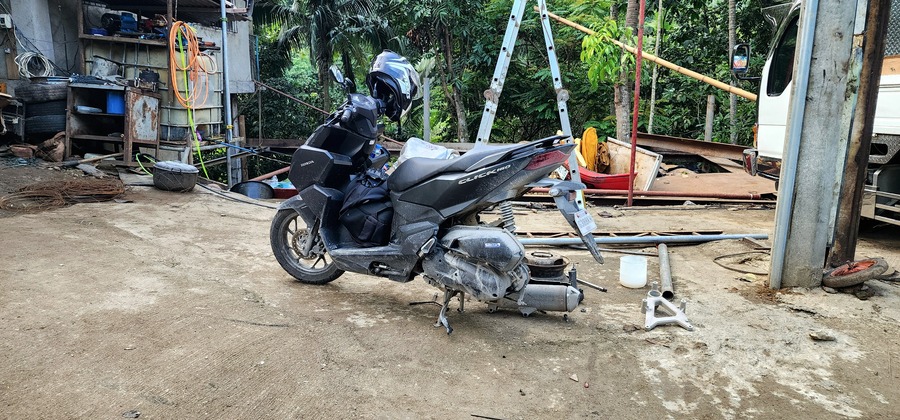
Always carry extra cash to cover unexpected expenses, like a flat tire repair or a visit to a mechanic shop.
Renting your scooter
Look for reputable rental shops with good reviews. Look for comments about the rental process, the condition of the scooters, and their insurance policy details. You’ll want to know what’s covered in case of an accident or damage. Be sure to read the fine print about things like possible damage charges and pricing for replacement parts.
Before you finalize the rental and zoom off, take some time to inspect the scooter thoroughly. This will help avoid any misunderstandings later on. Document everything with photos and videos! Walk around the scooter and check for any scratches, dents, cracks, or missing parts. Look closely at the tires, lights, brakes, and mirrors. Don’t be afraid to get down on one knee and take a good look. Point out any pre-existing damage to the rental shop employee and have them acknowledge it on the rental agreement. Make sure everything is in good working order, and don’t hesitate to ask the shop to fix any issues before taking it out. This way, you won’t be held responsible for any prior wear and tear.
Check those tires! Scooting on worn treads in the rain is a recipe for disaster, trust me. Don’t forget the air pressure either! Soft tires can be just as dangerous. If the tires look worn down or feel too soft, don’t hesitate to ask for a different scooter with good tread depth and proper air pressure. It’ll make your ride so much safer and more enjoyable, especially if you encounter any rainy weather. You’ll be glad you inspected them beforehand!
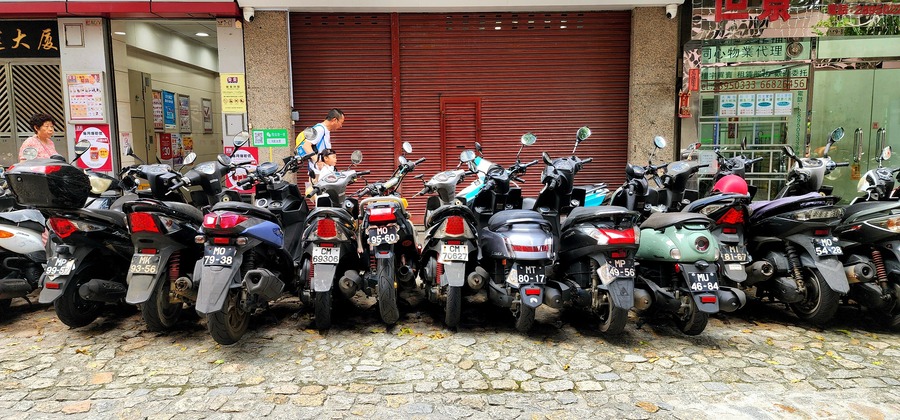
Scooter parking in Old Town Macau is notably limited and often tightly packed. The narrow streets and high population density contribute to the scarcity of parking spaces.
Renting from Individuals: While renting a scooter from a local might hold a certain appeal, it’s generally a risky proposition in Southeast Asia. Shady characters have been known to pull scams like following you and stealing the bike back with a spare key, or falsely accusing you of causing minor scratches and charging exorbitant repair fees. There can be situations, especially on remote islands, where renting from an individual might be your only option. However, for a safer and more transparent experience, it’s always best to stick with established rental shops.
Rental Deposit
Most scooter rentals will ask for a deposit as insurance against any damage. This can be your passport, another form of government ID, or sometimes even cash.
For the Long Haul: Consider a Scooter Purchase
If you’re planning an epic, multi-country adventure, consider buying your own scooter instead of renting. It can be a cost-effective option, especially for long trips, but be sure to factor in registration, insurance, and potential maintenance. Don’t forget to research border crossings for foreign motorbikes! I’ve had some headaches at borders in the past, but with a little planning, it’s always doable.
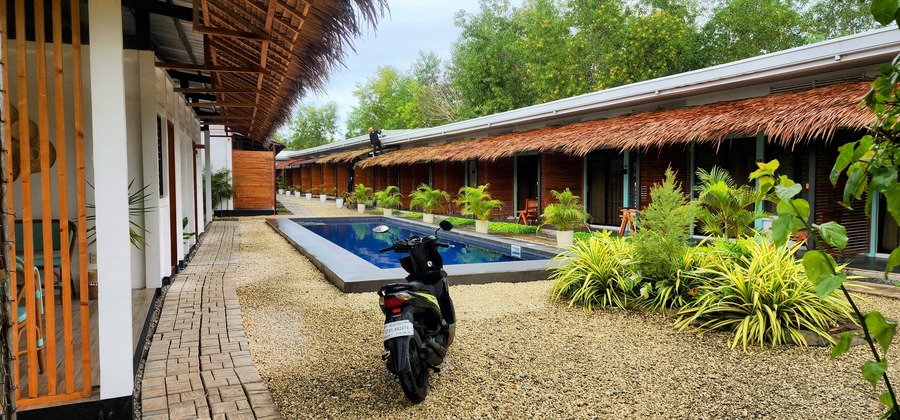
Bohol boasts a variety of attractions that are easily accessible by scooter.
Get a Good Helmet
Speaking of safety, don’t skimp on the helmet! Some rental shops might offer questionable options. Look for a well-maintained helmet that fits snugly. Ideally, a full-face helmet offers the most protection. If you’re planning a long adventure, consider purchasing your own helmet. Here in the Philippines, a decent full-face helmet typically ranges from 3,000 to 5,000 pesos. Look for one that’s ECE certified (ECE 22.06 is the current standard) and with a DOT and ICC sticker for maximum safety on the road. Full-face helmets are the way to go, especially for extended trips.
Always ensure you have a visor on or wear sunglasses to protect your eyes. A flying insect, debris, or even a small rock can flick into your face unexpectedly and potentially cause permanent eye damage. Full-face helmets with a proper visor are the best choice, especially for extended trips.
Equally important, make sure you fasten your helmet strap properly. I often see riders wearing helmets loosely, and that’s practically useless. In the event of a fall, the helmet can roll off, leaving your head unprotected. A properly secured helmet stays in place and provides the critical protection you need.
International Driver’s Permit (IDP): This little booklet is your golden ticket to scooter freedom. While some countries might not officially require it, having an IDP alongside your home country’s driver’s license can save you a lot of hassle (and potentially hefty fines) in case you get pulled over by the police. Especially in Thailand, the police can be very strict about IDPs. I learned this the hard way in Chiang Mai, getting pulled over what felt like daily. Plus, it shows rental shops you’re a responsible rider. Obtaining an IDP is usually a quick and inexpensive process in your home country. In the States, you can even get one at any AAA store for around $20.
Dress for the Slide, Not the Ride: Remember, asphalt doesn’t forgive. Pack long pants, sturdy shoes, and a lightweight jacket to protect yourself from the elements and potential mishaps. Don’t forget to pack a rain poncho! Southeast Asian weather is known for its dramatic shifts, so a little waterproof protection can save the day (and your outfit) from a sudden downpour.
Mandatory Requirements:
- Helmet: Philippine law mandates the use of a DOT-compliant or Philippine National Standard (PNS) certified helmet for both the driver and any passengers on a motorcycle.
- Closed-Toe Shoes: Riders and drivers must wear closed-toe shoes for proper grip and foot protection.
Finding Your Perfect Ride
Picking the right scooter is all about finding the perfect balance between power and comfort for your adventure. Here are two popular options:
- Honda Click 125: This zippy scooter offers a good balance of form factor (meaning it’s not too bulky) and power, making it ideal for navigating city streets and exploring.
- Suzuki Burgman: If ultimate comfort is your priority, the Suzuki Burgman is a dream come true. It boasts a plush seat and spacious design, perfect for long rides. However, keep in mind it might sacrifice some agility compared to the Click 125.
Ultimately, the best choice depends on your travel style and needs. Consider how much power you need for the terrain you’ll be exploring and prioritize comfort based on how long you’ll be spending in the saddle each day.
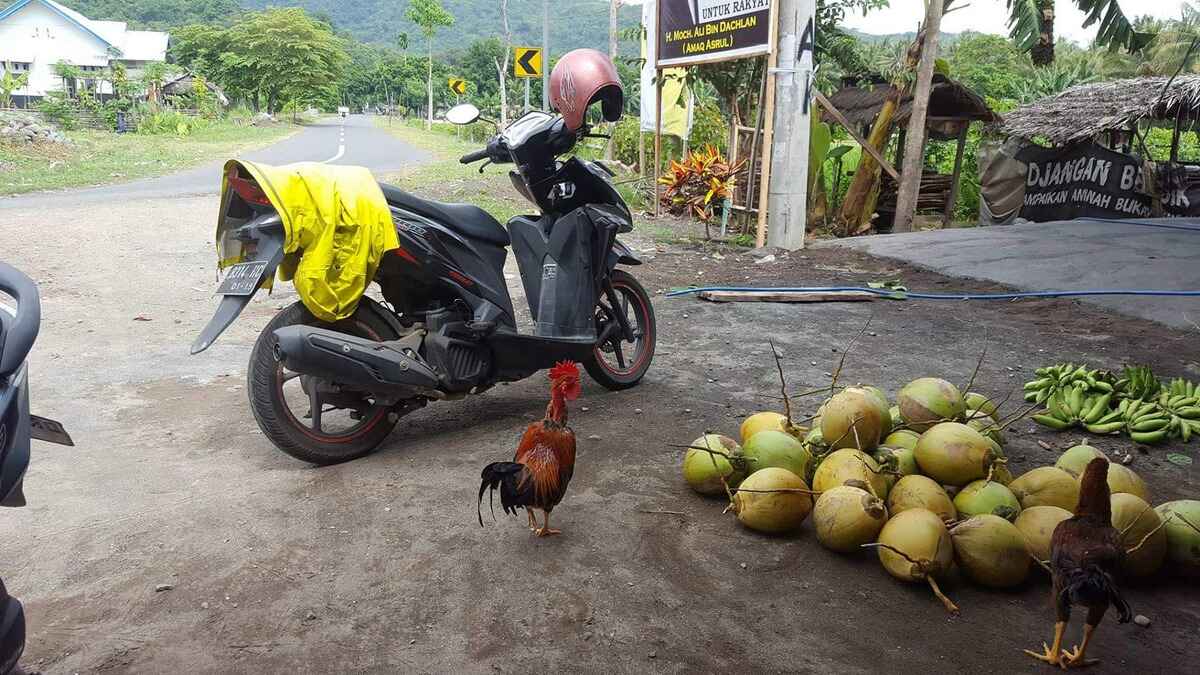
Cruising around Nusa Penida, Indonesia, and gotta grab a coconut for a break!
Hitting the Road
- Traffic Tamers: Traffic in Southeast Asia can be intense, especially in large cities. Take it slow, be defensive, and familiarize yourself with local traffic laws before venturing out. Remember, it’s better to arrive a little late than never at all.
- Map it Out (or Don’t): Having a map or using a navigation app can be helpful, but sometimes getting lost leads to the most amazing discoveries. Embrace the adventure, follow your instincts, and don’t be afraid to ask locals for directions – their smiles and broken English will add to the charm.
- Fuel for the Journey: Gas stations might not be as frequent as you’re used to, so keep an eye on the fuel gauge. Always carry some extra cash in case you need to top up in a remote area. In a pinch, you might spot small local shops selling gasoline in glass bottles – just ask the locals for help!
Avoiding Damage Drama
So, you wobbled a bit and accidentally laid your scooter down. Don’t worry, it happens! But what happens next? Rental shops hold you responsible for any damage, and some might inflate repair costs. Here’s how to avoid a post-scooter tumble meltdown:
- Price Transparency is Key: Before you rent, ask the shop for a price list of common replacement parts. This way, you’ll know ballpark figures for potential repairs and avoid any sticker shock later.
- Local Knowledge is Power: Consider taking the scooter to a local dealership (Honda, Yamaha, Suzuki) for a quick damage assessment. This can give you a good idea of what repairs might cost and serve as a reference point when negotiating with the rental shop.
- Prevention is Golden: Be mindful during your ride! Inspect the scooter for pre-existing damage before you zoom off, and ride defensively, especially in unfamiliar territory.
- Open Communication is Your Friend: If you do have a mishap, discuss the situation calmly with the rental shop. Having a reference price for repairs can help you reach a fair agreement.
By being prepared and informed, you can turn a potential disaster into a minor inconvenience on your scooter adventure.
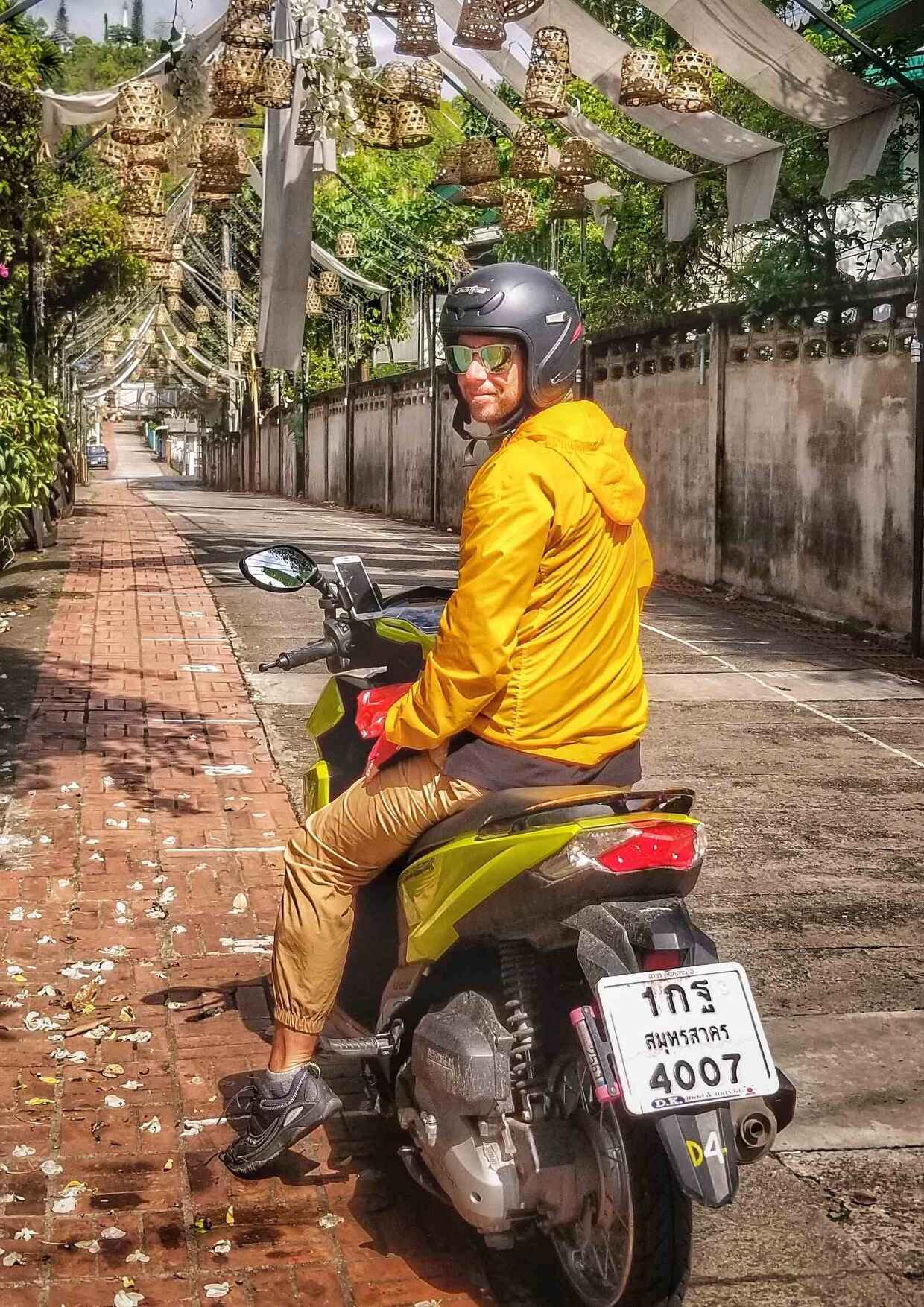

On the five-day epic journey via The Mae Hong Son Loop, I embarked on a thrilling 600-kilometer adventure through Thailand’s northwest corner. This circular motorcycle route is a mesmerizing experience, winding through towns, provinces, and rugged mountainous terrains.
Duration Discounts and Daily Rates
Scooter rentals in Southeast Asia are a budget-friendly way to explore, but prices can vary depending on a few factors:
- Rental Duration: Renting for a week or a month is significantly cheaper than daily rentals. Daily rates are typically quoted as a 24-hour period.
- Location: Prices can fluctuate between countries. For example, you might find better deals in less touristy areas.
In Moalboal, Cebu, a popular scooter choice is the Honda Click 125. The average daily rate is around 400 pesos (approximately $8 USD) for a 24-hour rental period.
Don’t skimp on health travel insurance!
Cruising around on a scooter is a fantastic way to explore Southeast Asia, but unexpected medical situations can put a damper on your adventure (and your wallet). Travel insurance with medical coverage is your safety net, ensuring you receive proper medical care without breaking the bank. Many policies cover scooter rentals, but be sure to check the fine print for details like engine size limitations.
Here are some crucial tips to consider before you zoom off
Respect the Road Hierarchy: Unlike back home, bikes are at the bottom of the pecking order. Bigger vehicles rule the road, so be extra cautious and yield the right of way.
Keep Your Cool: Traffic can get hectic, but stay calm! Don’t get flustered by beeps or close calls. They might just be friendly warnings or ways to navigate traffic. Getting angry clouds your judgment and increases your risk of an accident.
Nighttime Navigation: Not Recommended. Cruise through captivating landscapes by day, but ditch the scooter after dark. Nighttime riding in Southeast Asia throws a whole new set of challenges your way. Potholes transform into unseen hazards, keep an eye out for furry friends who might be out for a nighttime stroll., but also motorbikes, and other vehicles that may lack proper lighting or use blinding high beams.
Know Your Lane: This might seem obvious, but driving side changes between countries in Southeast Asia. Don’t rely on intuition – double-check the correct lane before hitting the road after crossing a border.
Honk Smart: Beeps are a way of life here! A quick honk before passing is a heads-up, not a sign of aggression. Larger vehicles expect it, so don’t be shy.
Assume the Unexpected: Be extra alert, as some drivers might seem a bit…enthusiastic. Bali, Philippines and Vietnam have a reputation for wilder traffic, while Thailand is generally considered calmer.
Avoid Alcohol Consumption: Never drink and drive. Alcohol impairs reaction time, judgment, and coordination, significantly increasing the risk of accidents. If you’ve been consuming alcohol, do not operate a motorcycle under any circumstances. Drinking and driving is never worth the risk. It’s not just about the legal consequences; it’s about protecting yourself and others from potentially life-threatening situations.
Don’t drive in the dark! Here in the Philippines, with sunsets around 6 pm year-round, daylight is precious for motorcycle trips. Plan accordingly by starting your day trip early in the morning. This gives you plenty of time for your journey, including stops and unexpected delays, and ensures you’re back before dusk.
Most importantly, always wear a helmet while riding!
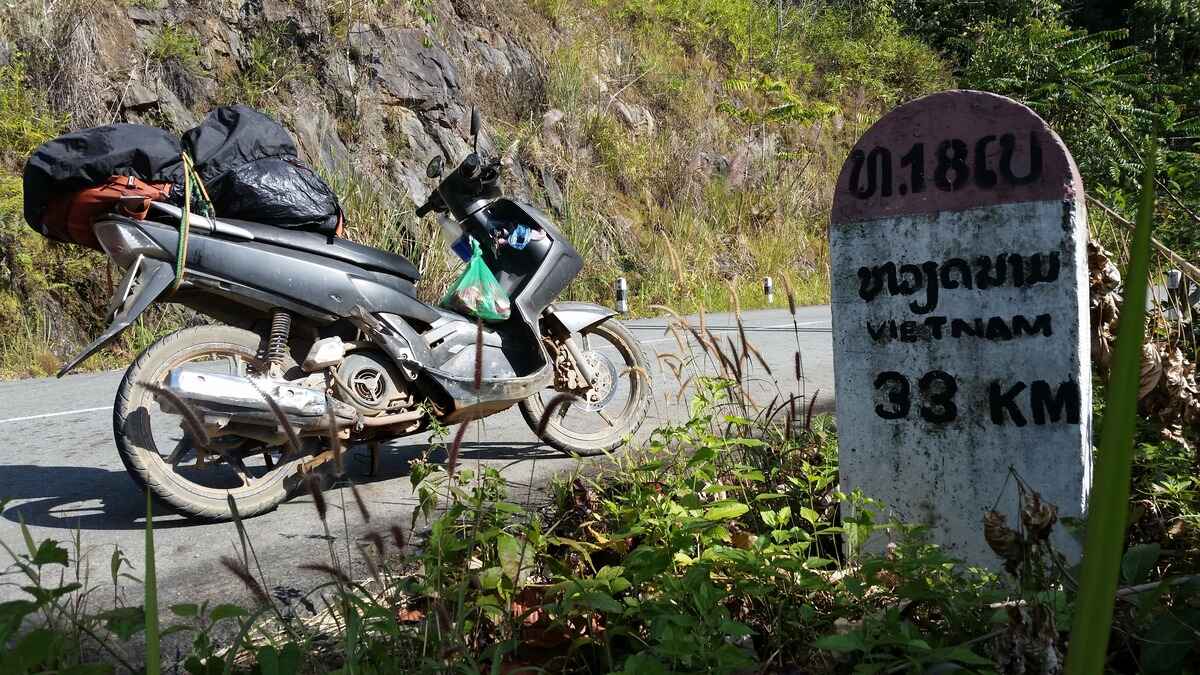
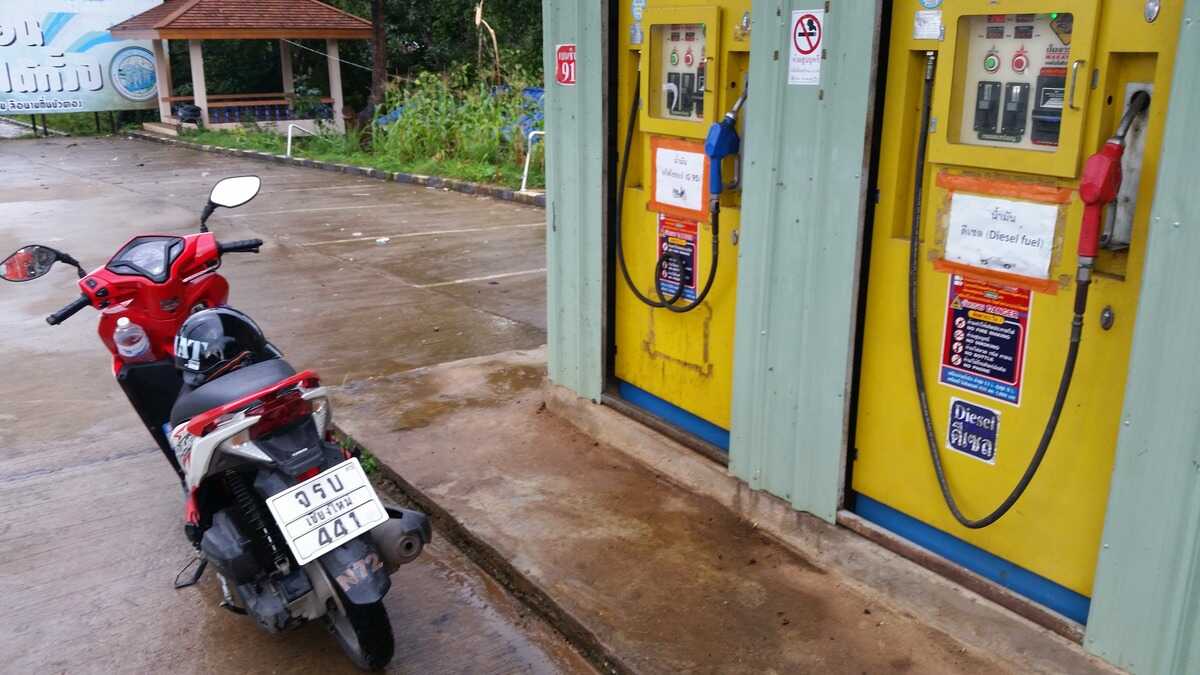
In the left image: 38km to Enter Vietnam from Laos. On the right image: “Self-service gas station in the North of Thailand.
Alrighty, that’s the two-wheeled wisdom for conquering Southeast Asia on a scooter! It’s an adventure unlike any other, offering freedom, flexibility, and endless scenic escapes. So, grab your helmet, strap on your sense of adventure, and get ready to hit the road. You might just be surprised at how quickly scooter life becomes your new favorite travel addiction.
